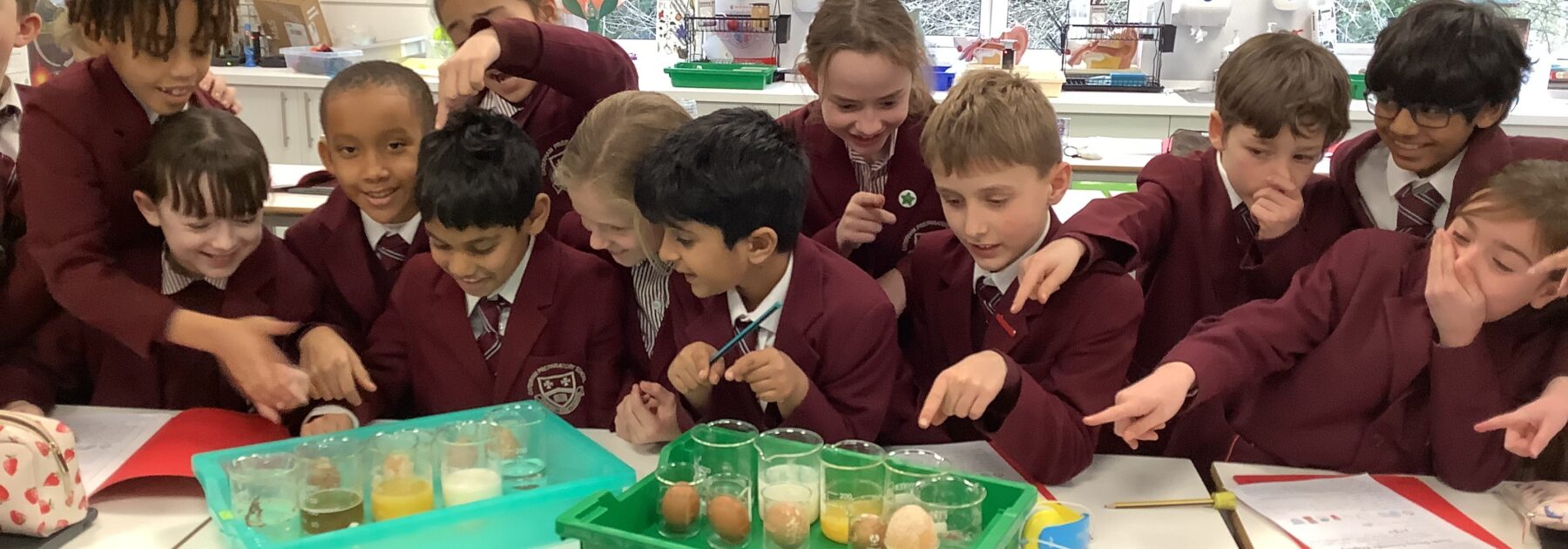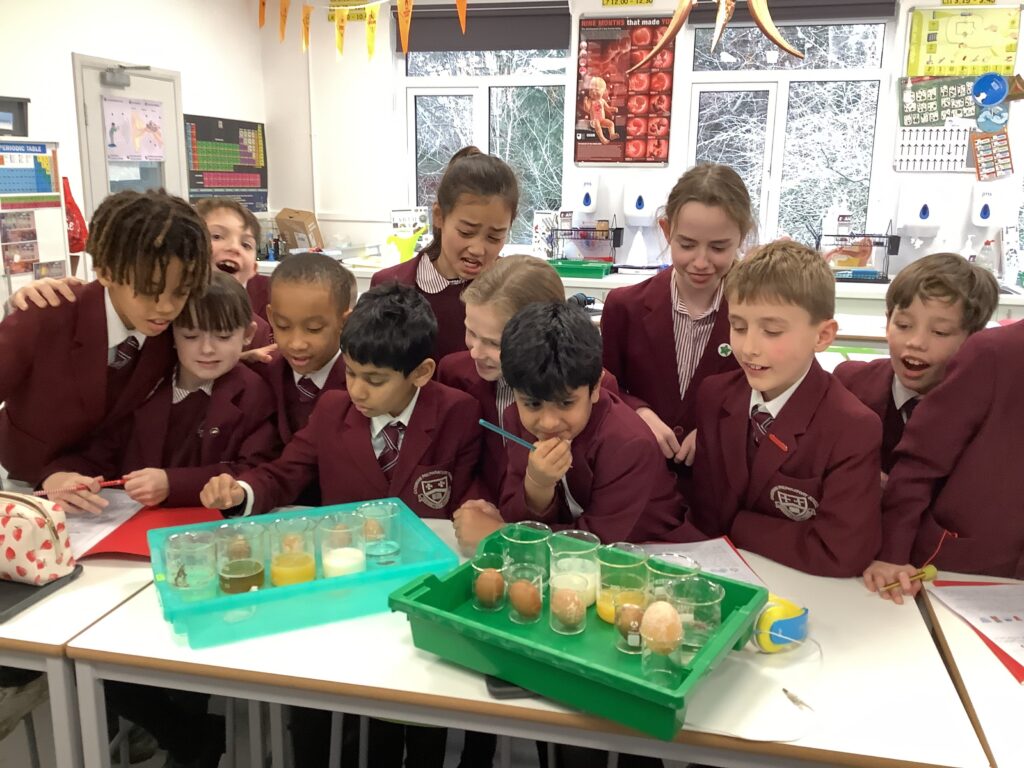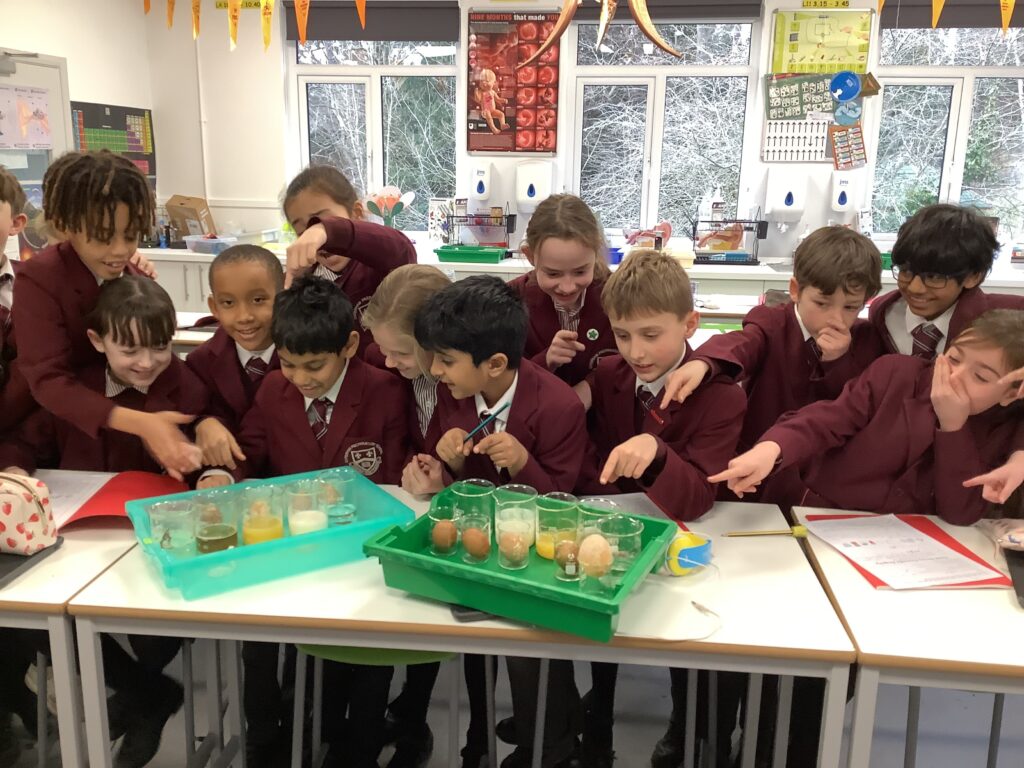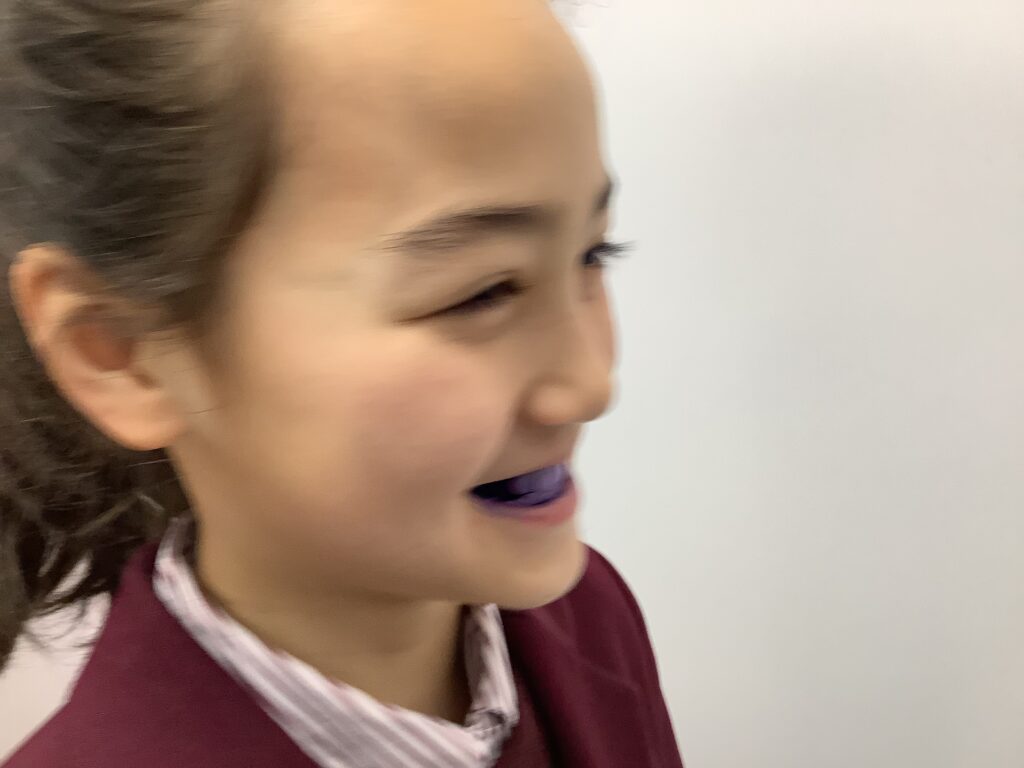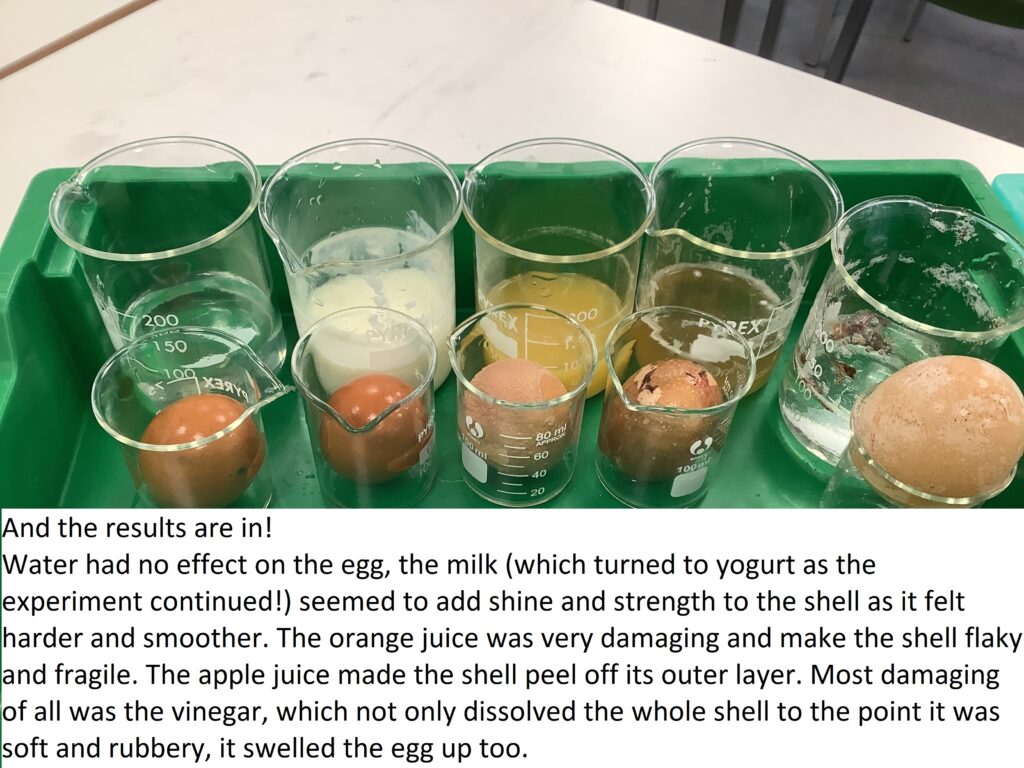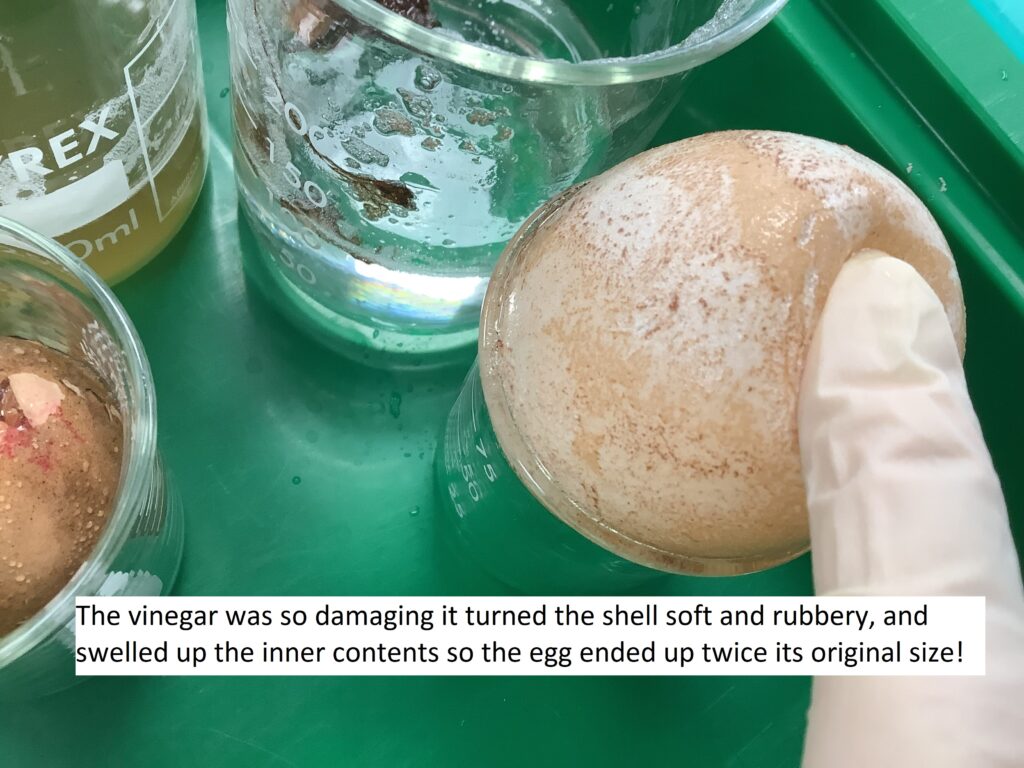Year 4 Egg-citing Tooth Experiment Produces Shocking Results
Definitely a practical which will have Year 4 reaching for their toothbrushes!
We investigated the effects different liquids had on egg shells as a model for the enamel on our teeth. We set the experiment up for a week to find out what liquids were good and those that were damaging to our teeth.
The water had no effect and acted as a control to compare the other results. The milk (which turned to yoghurt during the experiment!) actually seemed to reinforce the shell as it felt stronger, smoother and appeared more shiny (when rinsed free of the yoghurt!). The more damaging effects came from the fruit juices and vinegar though.
Least damaging was apple juice, which stripped the top layer off of the egg which seemed to rub and slip off very easily. Orange juice was really very damaging – it caused the shell to bubble and pit, it became very crumbly and fragile and turned to a gritty paste. However, it was vinegar which was the worst offender! This totally dissolved all of the shell and left the egg with little more than a stained, rubbery membrane which had swelled to twice the size of an ordinary egg as the vinegar had penetrated the egg itself.
We learned in the next lesson that the effects of having acidic drinks can be lessened by drinking through a straw, diluting with water and drinking either milk or water after. We concluded we must never clean our teeth straight after eating or drinking something acidic and should wait about 30-60 minutes as we could literally rub off our enamel.
We put all of our findings to good use when we practised cleaning all of the hard to reach areas using disclosing tablets to reveal any hidden plaque which could damage our teeth.
Well done Year 4, you produced some beautiful, shiny smiles!


